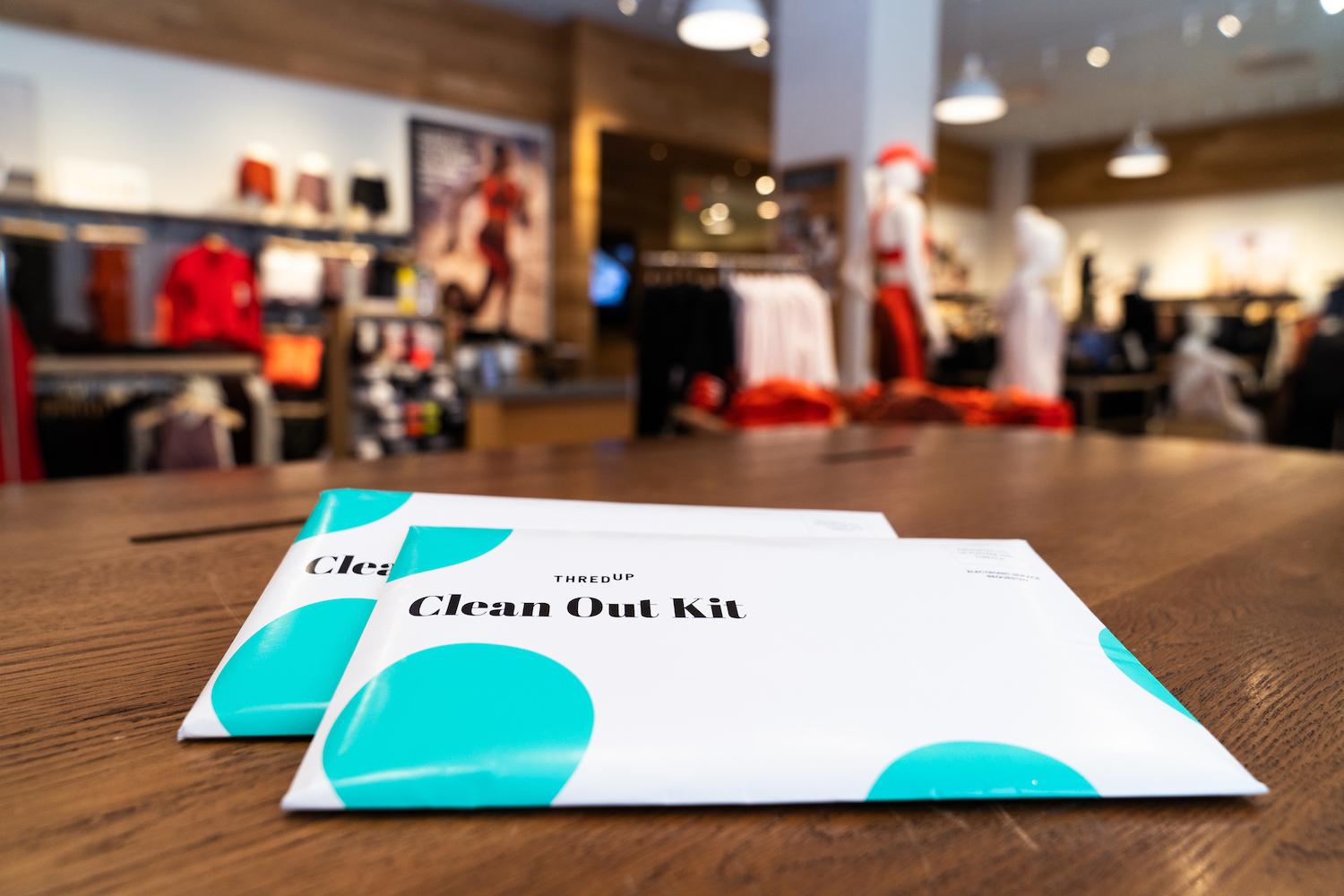
In the years following the financial meltdown of 2008, researchers tracked a significant upswing in secondhand purchases by cost-conscious consumers. The economic incentive to buy used clothing has abated since then, but other factors are going strong.
Ethical and environmental concerns, consumer interest in hunting for unique and unusual items, and the ease of online shopping are all adding more fuel to the resale fire. Now Gap, Inc. and other leading retailers are beginning to embrace the opportunity to realize bottom-line benefits from the clothing resale market, which can bolster their corporate responsibility profiles, too.
Gap partners with ThredUP to promote reuse and resale
Dipping into the resale field may seem counterintuitive for a retail brand. However, it may offer retailers an opportunity to attract new consumers and cement ties with existing fans in ways that conventional textile recycling does not.
For example, last week Gap announced a promotional partnership with the leading online clothing resale company ThredUP, to begin in April. Under the agreement, Gap will make ThredUP’s colorful “Clean Out” shipping bags or labels available at select stores, including Gap, Banana Republic, Athleta, and Janie and Jack.
The Clean Out bags are a key part of ThredUP’s strategy for attracting sellers in the increasingly competitive online resale market. The company provides both the bags and the shipping, making it easy and convenient for sellers to bundle up their unwanted items and send them off.
On its part, Gap will benefit from ThredUP’s seller incentive policy. ThredUP sellers can earn cash or credit, and those using credits will earn a 15 percent bonus if they redeem them at any of the participating Gap, Inc. brands.
Tackling the clothing waste problem
For shoppers who are increasingly aware of ethical and environmental concerns, the credit redemption and bonus incentives could help take some of the sting out of buying new items.
The partnership with ThredUP could also help Gap offset a thorny waste management problem. In its recent sustainability report, Gap, Inc. took note of the challenge of recycling waste from its retail stores. The company set a 2020 goal to divert more waste away from landfills, but it does not have direct control over waste management at three-quarters of its retail sites, instead dealing with a patchwork of different landlords and waste management companies.
Gap has worked with some of its largest landlords to improve recycling, but the solutions are slow to arrive. In the meantime, the company moved to redesign packaging use and reduce waste at the source.
That leads to another potential problem, in that package redesign can be a fraught and risky endeavor for a brand. However, the ThredUP partnership provides an opportunity for Gap to enlist consumers as supporters of the effort.
The clothing resale market: The numbers add up
The ThredUP partnership also enables Gap to position itself as a solution-seeker for a problem of eye-popping proportions that extends far beyond its retail operations.
According to one estimate, the average U.S. consumer throws away about 80 pounds of clothing annually. Only 15 percent is recycled, even though almost 100 percent of all textiles are potentially recyclable.
ThredUP has calculated that if all consumers substituted just one used item for a new purchase in a single year, the savings would amount to almost 6 billion pounds of carbon emissions or the equivalent of taking half a million cars off the road. Other statistics cited by the company include the potential for saving 25 billion gallons of water, 11 billion kilowatt-hours of energy and 449 million pounds of waste.
More retailers pin hopes on the clothing resale market
CNBC took a deep dive into the resale clothing market last week. As described by reporter Lauren Thomas, there is “no verdict yet” about the raw bottom-line benefits of resale ventures for leading retailers.
Nevertheless, activity in this sector has stepped up in recent months. Macy’s, J.C. Penney, and the Madewell brand of J. Crew are all testing pop-up shops curated by ThredUP at select stores. Last month Nordstrom also launched its own resale shop, online and onsite at its New York flagship store.
Analysts expect the resale market to continue growing. It stands at 6 percent of the total U.S. clothing and footwear industry currently, and Thomas cites a Wells Fargo analyst who foresees an increase to 10 percent within the next two years.
That could prove to be an underestimate, as a confluence of factors come together. In addition to increased ethical and environmental awareness, the financial factor may soon loom large again. Some top-line employment figures in the U.S. indicate a healthy consumer base, but other economic indicators — including the cost of housing, health care, student debt, childcare and transportation — reveal a much more complex retail picture, one in which consumers are cutting back where they can.
The resale numbers appear to support this trend. Last spring, ThredUP released its seventh annual resale report with the firm GlobalData Retail and found a significant upswing in resale interest among women. According to their data, 56 million women bought secondhand items in 2018, representing a substantial increase of 27 percent from the year before.
The prospects for sales growth are also good. The report surveyed resale shoppers and found that at least half of them plan to increase their resale buying in the coming years. It will be interesting to see what next year's sales report will bring.
Image credit: Gap, Inc. via Business Wire

Tina writes frequently for TriplePundit and other websites, with a focus on military, government and corporate sustainability, clean tech research and emerging energy technologies. She is a former Deputy Director of Public Affairs of the New York City Department of Environmental Protection, and author of books and articles on recycling and other conservation themes.














